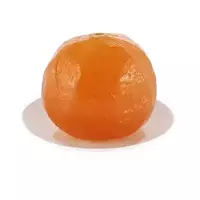Pickled pumpkin

Pumpkin is characterized not only by amazing taste, but also by a truly miraculous effect on the human body. However, some hostesses often refuse to use pumpkin for culinary purposes, citing the difficulty in processing fruits.
And in fact, pumpkins are much harder compared to other vegetables, while their weight can sometimes reach nine kilograms. However, despite this, it is not entirely reasonable to deprive yourself of all the nutrients and nutrients that pumpkin is so rich in.
This vegetable contains a lot of carotene, which has an extremely positive effect on vision and serves as a preventive agent for cancer. In addition, B vitamins are present in pumpkin, which have a beneficial effect on the nervous system, have a calming effect, as well as improve sleep and memory.
Pumpkin can be made not only delicious fragrant porridge, using rice or millet as a base, but also appetising jam, jam, cookies, ravioli, fritters. In addition, pumpkin juice is very useful. And many people also like stuffed pumpkin or simply fried in oil, pre-baked in flour or breadcrumbs, vegetable slices.
This healthy solar vegetable is often stored for future use, using various conservation methods. And this is not only a frost traditional for many, but also pickling. Pickled pumpkin, by the way, is unusually popular in Estonia. Pickled pumpkin tastes sour-sweet, somewhat savory (it depends on the spices added), so it is jokingly even called Estonian pineapple.
Pickled pumpkin is remarkably suitable as a vegetable side dish for baked or fried meat, a bird traditional to this country baked blood sausage. In addition, pickled pumpkin can be consumed simply as a salad.
As a rule, pickled pumpkin is usually harvested after the fruit has fully ripened - this can be even at the end of September, before the first frosts. Moreover, unlike zucchini and scallops, which are preserved in a young state, pumpkin gains taste and aroma by ripening. True, cutting it then becomes quite problematic, since the peel of the vegetable is too dense and firm.
Pickled pumpkin is unusually tasty, for the preparation of which a marinade is used, designed to harvest cucumbers or tomatoes. So, the composition of such a pour in addition to water includes an acidic component, which can be used acetic acid (essence), table vinegar or citric acid, as well as salt, sugar and some spices with spices. Moreover, the options for additives may depend on personal preferences - you can prepare pickled pumpkin spicy, sour, salty or sweet.
pickled pumpkin 42 kCal
Energy value of pickled pumpkin (Ratio of proteins, fats, carbohydrates - ju):
Proteins: 0.6 g (~ 2 kCal)
Fats: 0.1 g (~ 1 kCal)
Carbohydrates: 8.9 g (~ 36 kCal)
Energy ratio (bj | y): 6% | 2% | 85%
 Español
Español Français
Français Português
Português Русский
Русский 简体中文
简体中文 繁體中文
繁體中文 日本語
日本語 한국어
한국어 العربية
العربية Türkçe
Türkçe Қазақ
Қазақ Deutsch
Deutsch Italiano
Italiano Українська
Українська
